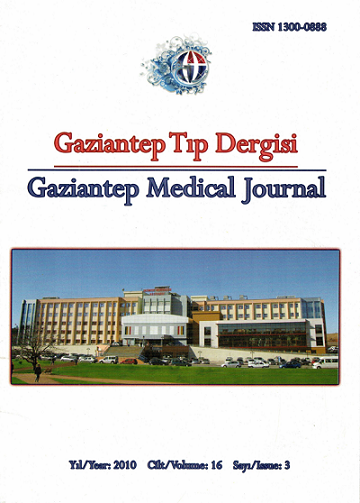Congenital Cataract
DOI:
https://doi.org/10.58600/eurjther.2010-16-3-1209-archKeywords:
Congenital cataract, Amblyopia, Intraocular lens, Anterior vitrectomyAbstract
Congenital cataract has a high amblyogenic potential and is an important subject in pediatric opthalmology. Because of amblyopia risk, congenital cataracts require an early diagnosis.Bilateral congenital cataract is genetic in at least 25% of cases. In contrast, unilateral congenital cataract is usually sporadic. The mode of inheritance is mostly autosomal dominant but autosomal recessive and X-linked modes also occur. Metabolic cataract may be diagnosed biochemically. Because of the anatomical dimensions being smaller and the tissue structures being softer and more elastic in the young patient, surgery of paediatric cataracts represents a special challenge for the ophthalmic surgeon. The evolution of paediatric cataract surgery continues, with many adult cataract surgical techniques being applied to children with minor technical adjustments. Intraocular lenses have helped to provide better anatomic and functional outcome for cataract surgery in children. More and more, surgeons are implanting intraocular lenses in younger children. One of the most widely reported technologic advances in 2004-2005 was the use of hydrofobic acrylic intraocular lenses in children. Predicting axial growth, and refractive change that accompanies it, is one of the major remaining challances for the long- term care of children who have had cataract surgery. Due to the increased inflammatory reaction postoperatively, a minimally traumatic operation, intensive occlusion therapy and optimal correction with glasses or contact lenses are also necessary. Orthoptic follow-up examinations are also important for the long-term result.In this review, a short information about diagnosis and management of congenital cataract is presented.
Metrics
References
Bermejo E, Martinez-Frias ML. Congenital eye malformations: clinical-epidemiological analysis of 1,124,654 consecutive births in Spain. Am J Med Genet. (1998);75:497- 504.
SanGiovanni JP, Chew EY, Reed GF. Infaltile cataract in the collaborative perinatal Project. Prevalence and risk factors. Arch Ophthalmol. 2002;120:1559-1565.
Stewart-Brown SL, Haslum MN. Partial sight and blindness in children of the 1970 birth cohort at ten years of age. J Epidemiol Community Health. 1998;42:17-23.
Gilbert CE. Childness blindness. In: Johnson GJ, Minassian DC, Weale R(eds) The Epidemiology of Eye Disease. 2.edition. Chapman & Hall Medical, London, England. 1998;181-207.
Foster A, Gilbert CE, Rahi JS. Epidemiology of cataract in childhood. J Cataract Refract Surg. 1997;23:601-604.
Lambert SR, Drack AV. Infantile cataracts. Surv Ophthalmol. 1996;40:427-458.
Rahi JS, Dezateux C. Congenital and infantil cataract in the United Kingdom: underlying or associated factors. British Congenital Cataract Interest Group. Invest Ophthalmol Vis Sci. 2000;41:2108-2114.
Wirth MG, Russell-Eggitt IM, Craig JE. Aetiology of congenital and paediatric cataract in an Australian population. Br J Ophthalmol. 2002;86:782-786.
Bruckner R. Practical use of the illumination test. Ophhalmologica. 1965;149:497-503.
Kohnen T, Lüchtenberg M. Untersuchungsmethodik zur Diagnostik der ein-und beidseitigen kindlichen Katarakt. Ophthalmologe. 2007;104:552-558.
Noorden GK. Von Histological studies of the visual system in monkeys with experimental amblyopia. Invest Ophthalmol. (1973);12:727-738.
Shi X, Bao YZ. Preoperative clinical features and surgical results of congenital cataract. Beijing Da Xue Xue Bao. 2005;37: 418-420.
Ayşe N, Nurten Ü, Bekir Sıtkı A, Sunay D, Adnan C. Factors Affecting The Visual Prognosis In Congenital Catarakts. T Kil Oftalmoloji. 1998;7:169-174.
Thoumazet F, Mauris-Tyson S, Colin J, Mortemousque B. Congenital cataract removed early: long-term visual acuity outcome and refractive changes. J Fr Ophtalmol. 2010;33(6):373-9.
Kohnen T, Lüchtenberg M. Operationstechniken der Katarakt und Linsenveraenderungen im Kindesalter. Ophthalmologe. 2008;108:338-347.
Chen TC, Walton DS, Bhatia LS. Aphakic glaucoma after congenital cataract surgery. Arch Ophthalmol. 2004;112:1819- 1825.
Rabiah PK. Frequency and predictors of glaucoma after pediatric cataract surgery. Am J Ophthalmol. 2004;13:30-37.
Bothun ED, Guo Y, Christiansen SP, Summers CG. Outcome of angle surgery in children with aphakic glaucoma. J Aapos. 2010;14(3):235-9.
Praveen MR, Shan SK, Vasavada VA. Triamcinolone- assisted vitrectomy in pediatric cataract surgery: Intraoperative effectiveness and postoperative outcome. J Aapos. 2010;14(4):340-344.
Gradin D, Mundia D. Effect of Intracameral Cefuroxime on Fibrinous Uveitis After Pediatric Cataract Surgery. J Pediatr Ophthalmol Strabismus. 2010;30:1-5.
Downloads
Published
How to Cite
Issue
Section
License
Copyright (c) 2023 European Journal of Therapeutics

This work is licensed under a Creative Commons Attribution-NonCommercial 4.0 International License.
The content of this journal is licensed under a Creative Commons Attribution-NonCommercial 4.0 International License.


















